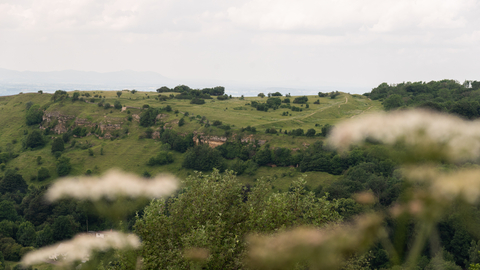
Barrow Wake (c) Nathan Millar
Location
Know before you go
Dogs
When to visit
Opening times
Open access throughout the yearBest time to visit
April to SeptemberAbout the reserve
Barrow Wake’s limestone grassland scrub and woodland support a large number of species, including birds, butterflies, reptiles, wildflowers and fungi. Both Barrow Wake and neighbouring Crickley Hill are part of the same Site of Special Scientific Interest (SSSI) on account of their splendid diversity of wildflowers. More than half the UK’s butterfly species have been recorded here. The grassland is maintained with the help of a herd of Belted Galloway Cattle, managed by the National Trust, and by volunteers and staff from GWT, who keep on top of scrub growth.
The name Barrow Wake comes from the presence of an Iron Age burial within the nature reserve. The discovery of three skeletons led to the pronouncement that the old barrow was ‘awoke’.
Located along the same stretch of the Cotswold Escarpment as Crickley Hill, there are wonderful views to be had of Gloucester and the Severn Vale, as well as an abundance of wildflowers on the reserve’s steep slopes, including large populations of musk orchids in midsummer and devil’s-bit scabious. Peregrine falcons nest on the higher cliffs and can be heard all year round, while many kinds of butterfly can be seen in spring and summer. There are trails to follow and the Cotswold Way crosses the nature reserve.
More detailed directions
Heading from the Air Balloon pub along the A417, take the next right onto the B4070, then the first right again.
Follow this road along to the car park.
